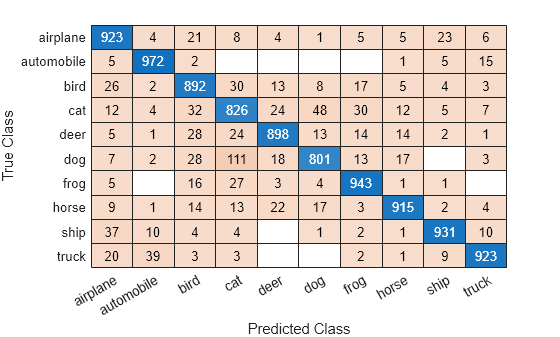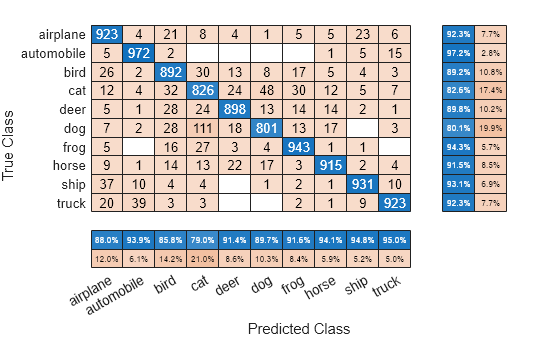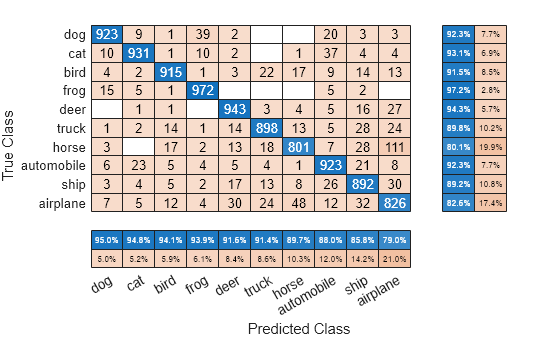confusionchart
Create confusion matrix chart for classification problem
Syntax
Description
confusionchart( creates a confusion matrix chart from true labels trueLabels,predictedLabels)trueLabels and predicted labels predictedLabels and returns a ConfusionMatrixChart object. The rows of the confusion matrix correspond to the true class and the columns correspond to the predicted class. Diagonal and off-diagonal cells correspond to correctly and incorrectly classified observations, respectively. Use cm to modify the confusion matrix chart after it is created. For a list of properties, see ConfusionMatrixChart Properties.
confusionchart( creates a confusion matrix chart from the numeric confusion matrix m)m. Use this syntax if you already have a numeric confusion matrix in the workspace.
confusionchart( specifies class labels that appear along the x-axis and y-axis. Use this syntax if you already have a numeric confusion matrix and class labels in the workspace.m,classLabels)
confusionchart( creates the confusion chart in the figure, panel, or tab specified by parent,___)parent.
confusionchart(___, specifies additional Name,Value)ConfusionMatrixChart properties using one or more name-value pair arguments. Specify the properties after all other input arguments. For a list of properties, see ConfusionMatrixChart Properties.
cm = confusionchart(___)ConfusionMatrixChart object. Use cm to modify properties of the chart after creating it. For a list of properties, see ConfusionMatrixChart Properties.
Examples
Input Arguments
Name-Value Arguments
Output Arguments
Limitations
MATLAB® code generation is not supported for
ConfusionMatrixChartobjects.
More About
Tips
If you have one-hot (one-of-N) data, use
onehotdecodeto prepare your data for use withconfusionchart. For example, suppose you have true labelstargetsand predicted labelsoutputs, with observations in columns. You can create a confusion matrix chart usingnumClasses = size(targets,1); trueLabels = onehotdecode(targets,1:numClasses,1); predictedLabels = onehotdecode(outputs,1:numClasses,1); confusionchart(trueLabels,predictedLabels)
If you have Statistics and Machine Learning Toolbox™, you can create a confusion matrix chart for tall arrays. For details, see
confusionchart(Statistics and Machine Learning Toolbox) and Confusion Matrix for Classification Using Tall Arrays (Statistics and Machine Learning Toolbox).





